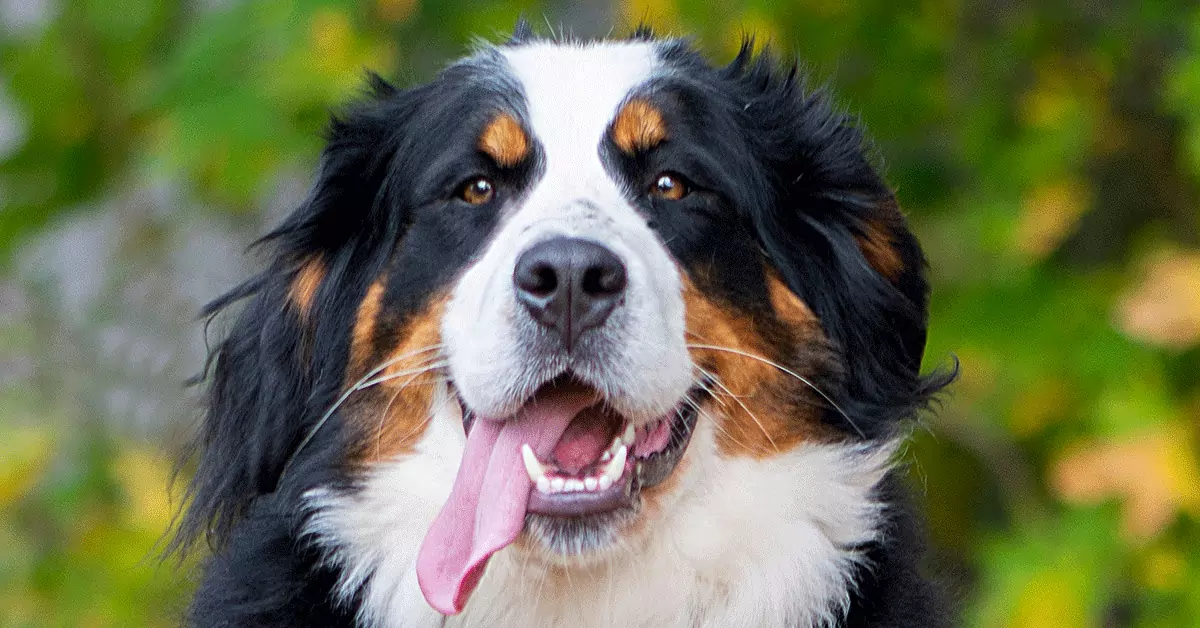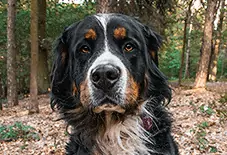
Meet the Bernese Mountain Dog
Calm Canine
Top Working Dog
Best Fur Friend
My Many Looks
My Breed Characteristics
Furbulous Fact
As I Grow Up
History of My Breed
Care Tips
Training Tips
Personality
Friendly
Loyal
Affectionate
Group
Working
Origin
Switzerland
Life Span
7-10 Years
Breed Popularity
#22 of 195
Height Range
23-27.5 Inches
Weight Range
70-115 Pounds
Coat Details
Type
Long
Texture
Slightly Wavy or Straight
Features
Colors
Black, Rust, White, Tan (Tricolor)
Hypoallergenic
Cost to Buy
$675-$1,995
Lifetime Care Cost
$19,420
My Many Looks
My Breed Characteristics
Furbulous Fact
As I Grow Up



History of My Breed
Care Tips
from Dr. Jessica Greenberg, Associate VeterinarianDevelop a great relationship with your vet.
Bernese Mountain Dogs are prone to cancers and are more likely to develop lymphoma than other breeds. It’s important to have a good relationship with your vet from the start of your dog’s life so you can both look out for and detect cancer quickly. -DrJessicaGreenberg,AssociateVeterinarian
Watch for Panosteitis and learn about treatments.
Panosteitis is an inflammatory bone condition that is mostly seen in large dog breeds, like Bernese Mountain Dogs, and is typically seen in young, male dogs. Pups with this condition present with lameness, lethargy, and fever. Talk to your vet about veterinary NDSAID (Non-Steroidal Anti-Inflammatory Drug) therapy as it can accelerate recovery. -Dr.MarcElie,Veterinarian
Help your Berner manage or avoid elbow dysplasia.
Elbow dysplasia is a congenital orthopedic disorder that causes arthritis in the elbow joint. It’s most commonly seen in large breeds and can be better avoided or managed by preventing obesity, medically managing joint pain, and maintaining musculoskeletal strength. -Dr.MarcElie,Veterinarian
Training Tips
from Dr. Jessica Greenberg, Associate VeterinarianTrain one command at a time.
Bernese Mountain Dogs are a sensitive and cautious breed who need to be given a lot of time to process things. They’re not as quick to respond to commands as most breeds and need an owner who is willing to put in the time to train them. Train slowly and only give one new command at a time. -GeorgieYoung,CertifiedProfessionalDogTrainer
Prioritize obedience training.
For a working dog, this breed is much more of a "couch potato," but is energetic when motivated. Just by sheer virtue of this dog's size, good obedience training is important. While these dogs are not typically aggressive, they can easily behave like a bull in a china shop when they get a burst of natural energy! -TommyMeyerhoffer,CertifiedDogTrainerandBehavioralTherapist
Be gentle with your training.
These dogs are generally willing to please and respond well to the gentlest of training methods. Consistently teach them what is expected of them with positive reinforcement for good behavior. Socialize these dogs well as puppies and remember that as gentle, cheerful, and loving as they are, they still need a leader to feel safe and happy. -TommyMeyerhoffer,CertifiedDogTrainerandBehavioralTherapist
My Many Looks
My Breed Characteristics
Furbulous Fact
As I Grow Up
History of My Breed
Care Tips
Training Tips
-
Personality
Friendly
Loyal
Affectionate
-
Group
Working
-
Origin
Switzerland
-
Life Span
7-10 Years
-
Breed Popularity
#22 of 195
-
Height Range
23-27.5 Inches
-
Weight Range
70-115 Pounds
-
动物皮毛
Type
Long
Texture
Slightly Wavy or Straight
Features
Colors
Black, Rust, White, Tan (Tricolor)
-
Hypoallergenic
-
Cost to Buy
$675-$1,995
-
Lifetime Care Cost
$19,420



